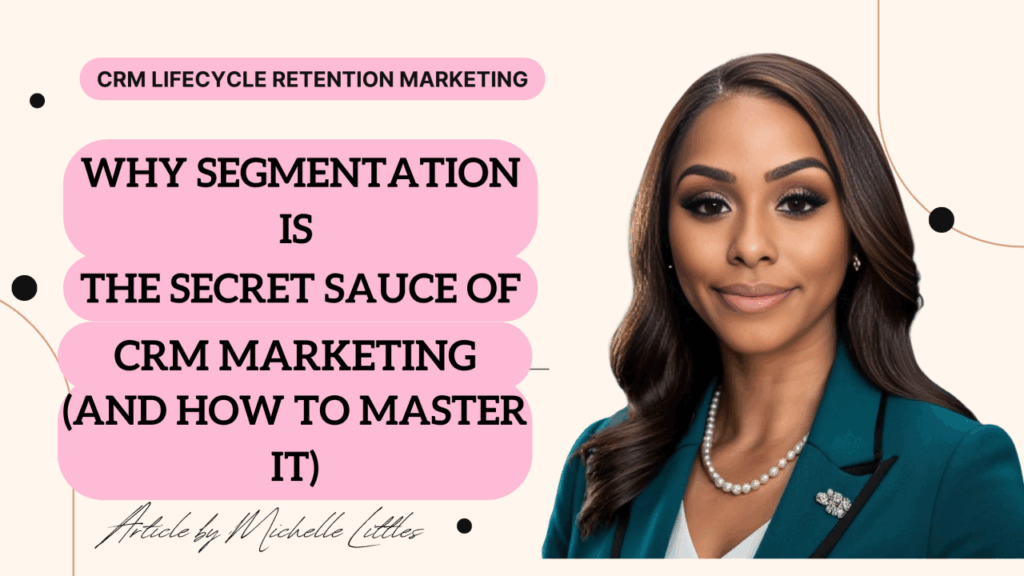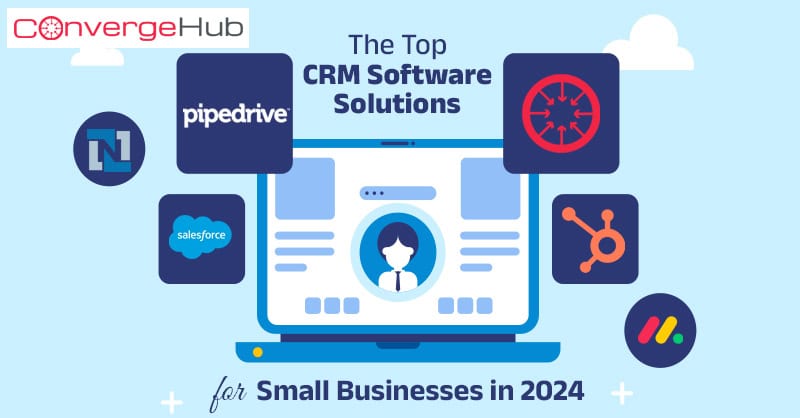
Mastering CRM Marketing Segmentation: A Comprehensive Guide to Customer Relationship Management
In the dynamic world of marketing, understanding your customers is no longer a luxury; it’s an absolute necessity. And when it comes to understanding your customers, customer relationship management (CRM) and marketing segmentation are two of the most potent tools in your arsenal. This comprehensive guide dives deep into the world of CRM marketing segmentation, equipping you with the knowledge and strategies to transform your marketing efforts from generic broadcasts to highly targeted, personalized campaigns that resonate with your audience and drive tangible results. We’ll explore the intricacies of CRM, the art of segmentation, and how to weave them together for unparalleled marketing success.
What is CRM and Why Does it Matter?
At its core, Customer Relationship Management (CRM) is a strategy for managing a company’s interactions with current and potential customers. It involves using technology to organize, automate, and synchronize business processes, primarily sales activities, but also those for marketing, customer service, and technical support. Think of it as a central hub for all your customer-related information.
Why is CRM so crucial? Because it offers a 360-degree view of your customers. This means you can:
- Understand Customer Behavior: Track interactions, purchase history, and preferences.
- Improve Customer Satisfaction: Personalize interactions and anticipate needs.
- Boost Sales and Revenue: Identify opportunities for upselling and cross-selling.
- Enhance Customer Retention: Build stronger relationships and foster loyalty.
- Streamline Processes: Automate tasks and improve efficiency.
CRM isn’t just about software; it’s about a customer-centric approach to business. It’s about putting your customers at the heart of everything you do.
The Power of Marketing Segmentation
Marketing segmentation is the practice of dividing a broad consumer or business market into sub-groups of consumers (known as segments) based on shared characteristics. These segments can be based on demographics, psychographics, behavior, or needs. Segmentation allows you to tailor your marketing messages and offers to specific groups, making them more relevant and effective.
Think of it like this: you wouldn’t send the same email to a teenager and a senior citizen, would you? Segmentation allows you to avoid that mistake. Instead, you craft messages that speak directly to each group’s interests and needs. This leads to:
- Increased Engagement: Relevant content grabs attention.
- Higher Conversion Rates: Targeted offers convert better.
- Improved ROI: Money is spent on the right audiences.
- Stronger Brand Loyalty: Customers feel understood and valued.
CRM and Segmentation: A Match Made in Marketing Heaven
When you combine the power of CRM with the precision of segmentation, you create a marketing powerhouse. CRM provides the data, and segmentation allows you to use that data effectively. Here’s how they work together:
- Data Collection: CRM systems gather a wealth of customer data, including demographics, purchase history, website activity, and communication history.
- Segment Creation: Based on the CRM data, you can create segments that reflect different customer groups.
- Targeted Campaigns: You can then launch marketing campaigns tailored to each segment.
- Performance Tracking: CRM systems track the performance of each campaign, allowing you to optimize your efforts over time.
This synergy allows you to move beyond mass marketing and engage in personalized, relevant marketing that resonates with your audience and drives results.
Key Segmentation Strategies for CRM Marketing
Now, let’s delve into some of the most effective segmentation strategies you can use within your CRM system:
1. Demographic Segmentation
Demographic segmentation involves dividing your market based on demographic factors such as age, gender, income, education, occupation, and family size. This is one of the most common and straightforward segmentation methods.
Example: A clothing retailer might target young adults (18-25) with trendy, affordable clothing and target older adults (50+) with more classic, high-quality apparel.
Benefits: Easy to implement and provides a broad overview of your customer base.
Data Sources: CRM data, surveys, third-party data providers.
2. Geographic Segmentation
Geographic segmentation involves dividing your market based on location, such as country, region, city, or even neighborhood. This is particularly useful for businesses with a physical presence or those offering location-specific products or services.
Example: A restaurant chain might offer different menu items and promotions based on the local tastes and preferences of each region.
Benefits: Allows for localized marketing and targeted advertising.
Data Sources: CRM data (address information), IP address tracking, location-based marketing tools.
3. Psychographic Segmentation
Psychographic segmentation dives deeper than demographics, looking at customers’ lifestyles, values, attitudes, interests, and personality traits. This helps you understand what motivates your customers and what they care about.
Example: A travel agency might target adventure seekers with offers for exotic expeditions and target luxury travelers with offers for high-end resorts.
Benefits: Creates highly personalized marketing messages that resonate with customers on a deeper level.
Data Sources: Surveys, social media analysis, customer feedback, CRM data (based on stated preferences).
4. Behavioral Segmentation
Behavioral segmentation focuses on how customers interact with your brand, including their purchase history, website activity, brand loyalty, product usage, and response to marketing campaigns. This is one of the most valuable segmentation strategies because it directly relates to customer behavior.
Example: An e-commerce store might target customers who have abandoned their shopping carts with a reminder email and a special offer.
Benefits: Allows for highly targeted campaigns based on actual customer actions.
Data Sources: CRM data (purchase history, website activity, email interactions), marketing automation platforms.
5. Needs-Based Segmentation
Needs-based segmentation groups customers based on their specific needs or problems that your product or service can solve. This is a very customer-centric approach that focuses on the value you provide.
Example: A software company might target small businesses with affordable, easy-to-use solutions and target large enterprises with complex, enterprise-grade solutions.
Benefits: Creates highly relevant and effective marketing messages that address specific customer pain points.
Data Sources: Customer surveys, customer feedback, market research, CRM data (based on customer inquiries and support requests).
Implementing CRM Marketing Segmentation: A Step-by-Step Guide
Now that you understand the key segmentation strategies, let’s walk through the process of implementing CRM marketing segmentation:
Step 1: Define Your Goals and Objectives
Before you start segmenting, it’s important to define your goals. What do you want to achieve with your segmentation efforts? Are you trying to increase sales, improve customer retention, or launch a new product? Having clear objectives will guide your segmentation strategy.
Step 2: Gather and Analyze Your Data
Your CRM system is your primary source of data. However, you may need to supplement it with other data sources, such as surveys, website analytics, and social media data. Analyze this data to identify patterns, trends, and insights about your customers.
Step 3: Choose Your Segmentation Strategy
Based on your goals and data analysis, choose the segmentation strategies that are most relevant to your business. You may use a combination of strategies to create more granular segments.
Step 4: Create Your Segments
Using your CRM system, create your customer segments based on the chosen criteria. Ensure that your segments are clearly defined and that each customer is assigned to a single segment.
Step 5: Develop Targeted Campaigns
Create marketing campaigns that are tailored to each segment. This includes crafting specific messages, offers, and calls to action that resonate with each group.
Step 6: Implement Your Campaigns
Use your CRM system and other marketing tools to launch your campaigns. Make sure that your campaigns are properly tracked and that you can measure their performance.
Step 7: Track and Analyze Results
Monitor the performance of your campaigns, tracking key metrics such as click-through rates, conversion rates, and customer engagement. Analyze the results to identify what’s working and what’s not.
Step 8: Optimize and Refine
Based on your analysis, optimize your campaigns and refine your segmentation strategy. Continuously test and iterate to improve your results over time. Segmentation is not a one-time effort; it’s an ongoing process.
Choosing the Right CRM for Segmentation
The right CRM system is crucial for effective segmentation. Here are some key features to look for:
- Data Management: The CRM should be able to store and manage a large volume of customer data.
- Segmentation Capabilities: The CRM should allow you to create and manage segments based on various criteria.
- Reporting and Analytics: The CRM should provide robust reporting and analytics tools to track campaign performance.
- Marketing Automation: The CRM should integrate with marketing automation platforms to automate campaign execution.
- Integration: The CRM should integrate with other marketing tools, such as email marketing platforms and social media management tools.
- Scalability: The CRM should be able to scale with your business as it grows.
Some popular CRM systems that offer strong segmentation capabilities include Salesforce, HubSpot, Microsoft Dynamics 365, and Zoho CRM. The best CRM for you will depend on your specific needs and budget.
Best Practices for CRM Marketing Segmentation
Here are some best practices to maximize the effectiveness of your CRM marketing segmentation:
- Start Small: Don’t try to segment your entire customer base at once. Start with a few key segments and gradually expand your efforts.
- Keep it Simple: Avoid creating overly complex segments that are difficult to manage.
- Focus on Actionable Segments: Make sure your segments are defined in a way that allows you to take specific actions.
- Personalize Your Messaging: Use personalized content and offers to make your marketing messages more relevant.
- Test and Iterate: Continuously test and refine your segmentation strategy to improve your results.
- Use a Variety of Data Sources: Don’t rely solely on your CRM data. Supplement it with other data sources to gain a more complete understanding of your customers.
- Regularly Review and Update Your Segments: Customer behavior and preferences change over time, so it’s important to regularly review and update your segments.
- Ensure Data Privacy and Compliance: Always comply with data privacy regulations, such as GDPR and CCPA.
Examples of Successful CRM Marketing Segmentation in Action
Let’s look at some real-world examples of how businesses are using CRM marketing segmentation:
Example 1: E-commerce Retailer
An e-commerce retailer segments its customers based on purchase history and website activity. They identify segments such as:
- High-Value Customers: Customers who have made frequent purchases and spent a significant amount of money. They receive exclusive offers and early access to sales.
- First-Time Buyers: Customers who have made their first purchase. They receive a welcome email and a special discount on their next purchase.
- Abandoned Cart Shoppers: Customers who have added items to their cart but haven’t completed the purchase. They receive a reminder email and a special offer to encourage them to complete their purchase.
- Inactive Customers: Customers who haven’t made a purchase in a while. They receive a re-engagement email with a special offer to encourage them to return.
This segmentation strategy allows the retailer to personalize its marketing messages and offers, leading to increased sales and customer loyalty.
Example 2: SaaS Company
A SaaS company segments its customers based on their usage of the software and their subscription plan. They identify segments such as:
- Free Trial Users: Users who are on a free trial. They receive onboarding emails and tutorials to help them get the most out of the software.
- Basic Plan Users: Users who are on a basic subscription plan. They receive tips and tricks to help them use the software more effectively and upgrade to a higher plan.
- Premium Plan Users: Users who are on a premium subscription plan. They receive access to exclusive features and priority support.
- Churned Customers: Customers who have canceled their subscription. They receive a win-back email with a special offer to encourage them to resubscribe.
This segmentation strategy allows the SaaS company to provide tailored support and resources to each customer segment, leading to increased customer satisfaction and retention.
Example 3: Financial Services Company
A financial services company segments its customers based on their financial goals and risk tolerance. They identify segments such as:
- Retirement Savers: Customers who are saving for retirement. They receive information about retirement planning and investment products.
- First-Time Homebuyers: Customers who are looking to buy their first home. They receive information about mortgages and home-buying tips.
- High-Net-Worth Individuals: Customers with a high net worth. They receive personalized financial advice and access to exclusive investment opportunities.
- Risk-Averse Investors: Customers who are risk-averse. They receive information about low-risk investment options.
This segmentation strategy allows the financial services company to provide relevant financial advice and products to each customer segment, leading to increased customer satisfaction and loyalty.
Measuring the Success of Your Segmentation Efforts
It’s crucial to measure the success of your segmentation efforts to ensure that you’re getting a good return on your investment. Here are some key metrics to track:
- Conversion Rates: Track the conversion rates for each segment. Are your targeted campaigns leading to more conversions?
- Click-Through Rates (CTR): Monitor the CTRs for your email campaigns and other marketing efforts. Are your messages resonating with your audience?
- Customer Engagement: Measure customer engagement metrics, such as website visits, social media interactions, and time spent on your website.
- Customer Lifetime Value (CLTV): Analyze the CLTV for each segment. Are your segmented campaigns increasing the CLTV of your customers?
- Customer Retention Rate: Track the customer retention rate for each segment. Are your segmented campaigns helping you retain customers?
- Return on Investment (ROI): Calculate the ROI for your segmentation efforts. Are you generating a positive return on your investment?
By tracking these metrics, you can assess the effectiveness of your segmentation strategy and make adjustments as needed.
The Future of CRM Marketing Segmentation
The future of CRM marketing segmentation is bright. As technology continues to evolve, we can expect to see even more sophisticated segmentation strategies and tools. Here are some trends to watch:
- Artificial Intelligence (AI): AI will play an increasingly important role in segmentation, enabling businesses to analyze vast amounts of data and identify new segments.
- Hyper-Personalization: Businesses will strive to create even more personalized marketing experiences, tailoring messages and offers to individual customers.
- Predictive Analytics: Businesses will use predictive analytics to anticipate customer needs and preferences.
- Cross-Channel Marketing: Businesses will create seamless marketing experiences across multiple channels, such as email, social media, and mobile.
- Privacy-Focused Marketing: Businesses will prioritize data privacy and transparency, building trust with their customers.
By staying ahead of these trends, you can ensure that your CRM marketing segmentation strategy remains effective and relevant in the years to come.
Conclusion: Unleash the Power of Segmentation
CRM marketing segmentation is a powerful strategy that can transform your marketing efforts and drive significant results. By understanding your customers, dividing them into meaningful segments, and tailoring your marketing messages and offers, you can create more relevant and effective campaigns that resonate with your audience and build stronger customer relationships.
By implementing the strategies and best practices outlined in this guide, you can unlock the full potential of CRM marketing segmentation and achieve your marketing goals. So, take the leap, start segmenting, and watch your marketing efforts soar!


